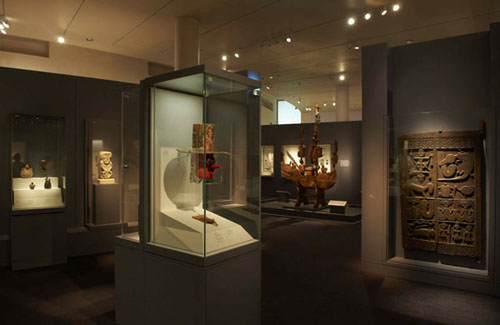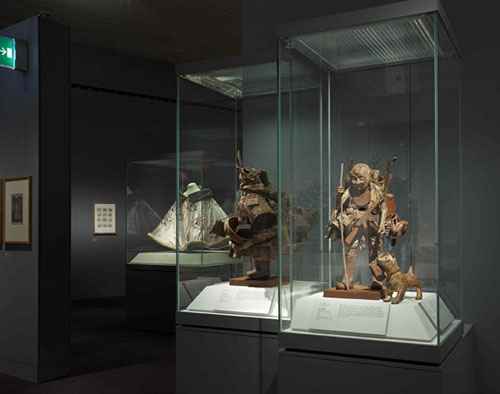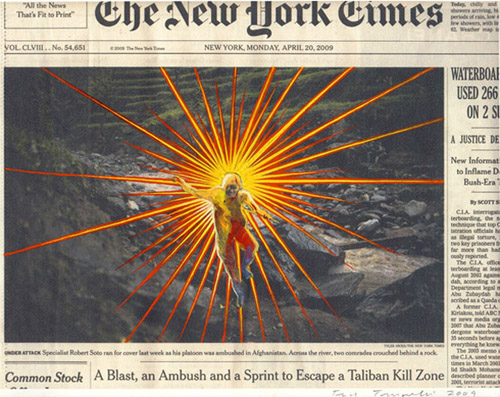Last year, after exiting a gallery show in New York in Chelsea, I felt a physical illness induced by what I deemed to be the complete and utter soullessness of the work I had just viewed. Eager to locate an antidote, I hailed a cab uptown to the Metropolitan Museum of Art to walk through the Modern and Contemporary collection galleries. Encountering many "old friends" -- works by Mark Rothko, George Segal, Barnett Newman -- I instantly relaxed.
Art museums play a unique and essential role in contemporary life. How do art museums contribute to the good of society? Museums are one of the few spaces where people of all political affiliations, economic standings, ethnicities, genders, and ages mix indiscriminately. At their core museums offer a highly unstructured experience; visitors are left to wander freely amongst works of art and potentially be moved by what they see. One can stand in front of a particular object for as short or as long a time as one wishes. Usually quiet and well lit, museums allow for and encourage introspection and reflection, providing a point of respite in our increasingly fast paced and information driven world.
 Grayson Perry: Tomb of the Unknown Craftsman at the British Museum. Courtesy of the British Museum.
Grayson Perry: Tomb of the Unknown Craftsman at the British Museum. Courtesy of the British Museum.
 Grayson Perry: Tomb of the Unknown Craftsman at the British Museum. Courtesy of the British Museum.
Grayson Perry: Tomb of the Unknown Craftsman at the British Museum. Courtesy of the British Museum.
 Fred Tomaselli: April 20, 2009, 2009. Gouache on digital print, 8.5" x 11". Image courtesy of the artist.
Fred Tomaselli: April 20, 2009, 2009. Gouache on digital print, 8.5" x 11". Image courtesy of the artist.
Some might say that museums are antiquated notions, doomed like libraries and newspapers to become obsolete. I wholeheartedly disagree. This is an era in which virtually anything can be customized. From self-selecting the news we receive to designing our own tennis shoes, personalization is the order of the day. But there are definite downsides to this increasingly bespoke existence. No matter how much information we have access to or how quickly it can be retrieved, something essential is lost if we only encounter what we already know.
Libraries, newspapers, and museums are inherently designed to celebrate serendipity. Doing research in the library stacks, there is an anticipation of finding something you are seeking but also of discovering something new, a knowledge that you may not find the exact fact you are looking for but rather a clue that might even set you on a path to somewhere better. Newspaper headlines are similar. Of course a headline has to catch your eye so that you read the article. But part way through that text perhaps you move to another column or flip the page. Walking through a museum like the Met to see the collection area you came for, you pass an extraordinary number of equally compelling objects, any of which has the potential to catch your attention and take your visit in an altogether different direction.
All of these experiences take time, something that no one seems to have enough of. The opportunity to meander is comparable to a mental pause. Science has shown that creativity is best fostered by "goofing off." And in fact anticipation, surprise, and excitement all result from randomness. The most impactful experiences are often those not at all planned. Immediacy, ease, and control decrease not only serendipity, but also the romance of life. Conversely, museums and their analog presentation of objects facilitate exactly the kinds of unexpected encounters that take us somewhere new, an experience of transcendence that, once known, becomes eternally sought.
 Gian Lorenzo Bernini: Ecstasy of Saint Teresa, 1647-1652, Marble, 59 inches, Santa Maria della Vittoria, Rome.
Gian Lorenzo Bernini: Ecstasy of Saint Teresa, 1647-1652, Marble, 59 inches, Santa Maria della Vittoria, Rome.